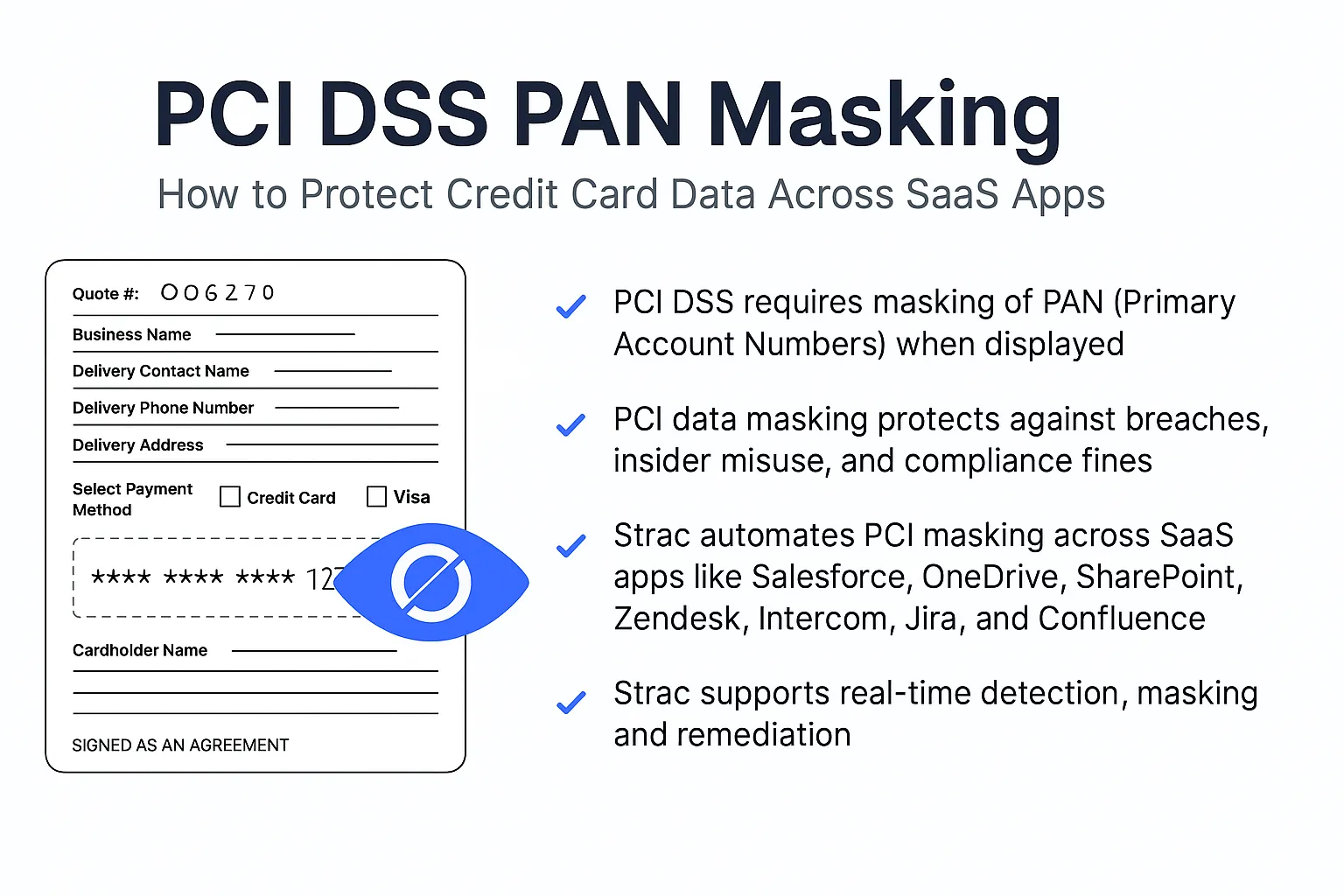TL;DR:
- Asana DLP helps prevent unintentional exposure of sensitive data in tasks and attachments.
- Strac offers automated sensitive data discovery and classification in Asana.
- Strac provides real-time data monitoring, alerts, and automated data remediation.
- Granular access controls ensure only authorized users can view sensitive data in Asana.
- Compliance and audit reporting features help maintain regulatory compliance and data security in Asana.
Why One Should Have Asana DLP?
Asana is widely used by teams to collaborate on tasks, manage projects, and share updates. However, as businesses increasingly rely on Asana to manage workflows, sensitive information often gets shared across tasks, comments, attachments, and sub-tasks. This presents a variety of data security challenges, particularly in regulated industries or those handling sensitive client data, such as:
- Unintentional Exposure of Sensitive Data: Asana is designed for collaboration, which can lead to users unintentionally sharing Personally Identifiable Information (PII), Protected Health Information (PHI), or financial data in tasks, comments, and file attachments. Without proper safeguards, this sensitive data can easily be exposed to users who shouldn’t have access to it, violating internal policies and compliance regulations like GDPR, HIPAA, and PCI DSS.
- Limited Native Data Security Controls:While Asana offers basic permission settings, it lacks advanced security controls like automated data loss prevention (DLP) mechanisms. As a result, organizations cannot automatically detect, classify, or block sensitive data within Asana, leaving them exposed to insider threats and accidental data leaks.
- Lack of Data Visibility and Classification:Asana does not provide native tools to categorize or classify data shared within tasks. This creates a blind spot for IT and security teams, who are unable to track where sensitive data is stored or determine who has access to it. Sensitive documents or credentials may be buried in file attachments, making it hard to ensure compliance.
- Risk of External Sharing:Asana tasks often involve external collaborators such as vendors, clients, or partners. The risk of sensitive data being shared with external users grows exponentially if the organization lacks a way to enforce data security policies at the platform level.
How Strac solves problems associated with Asana DLP?
Strac provides a comprehensive solution to these data security challenges by integrating seamlessly with Asana to offer advanced Data Loss Prevention (DLP) capabilities. Here's how Strac solves these problems:
- Automated Sensitive Data Discovery and Classification:Strac integrates with Asana to scan tasks, comments, and attachments for sensitive data such as PII, PHI, financial information, and credentials. It leverages machine learning to automatically classify sensitive information based on its type and context, giving security teams visibility into where sensitive data resides in Asana.
- Real-Time Data Monitoring and Alerts:Strac continuously monitors the Asana workspace for any newly added sensitive information. If a user shares sensitive data in a task description, comment, or file attachment, Strac immediately flags the content and sends alerts to administrators, allowing them to take swift action before a breach occurs.

- Automated Data Remediation:Once Strac identifies sensitive data, it can automatically remediate it based on pre-configured policies. For example, Strac can redact sensitive information from comments or tasks, or restrict access to file attachments containing PII. This ensures that sensitive data is handled according to company policies without manual intervention.

- Granular Access Controls:Strac enables fine-tuned control over who can view sensitive data within Asana. It integrates with Asana’s user and group permissions to ensure that only authorized users can access specific tasks or files containing sensitive data. This minimizes the risk of internal data leaks by limiting data visibility to relevant team members.
- Compliance and Audit Reporting:With Strac’s Asana DLP solution, security and compliance teams can generate detailed audit reports on how sensitive data is handled within the Asana workspace. This not only helps ensure regulatory compliance but also demonstrates due diligence in securing sensitive information to auditors and stakeholders.
By leveraging Strac’s Asana DLP capabilities, organizations can ensure that their project management activities remain secure while minimizing the risk of data breaches, regulatory non-compliance, and reputational damage.
Sensitive Data Types for Asana DLP & DSPM
Checkout all the sensitive data elements and file formats supported by Strac: https://www.strac.io/blog/strac-catalog-of-sensitive-data-elements











.webp)














.webp)




.avif)


